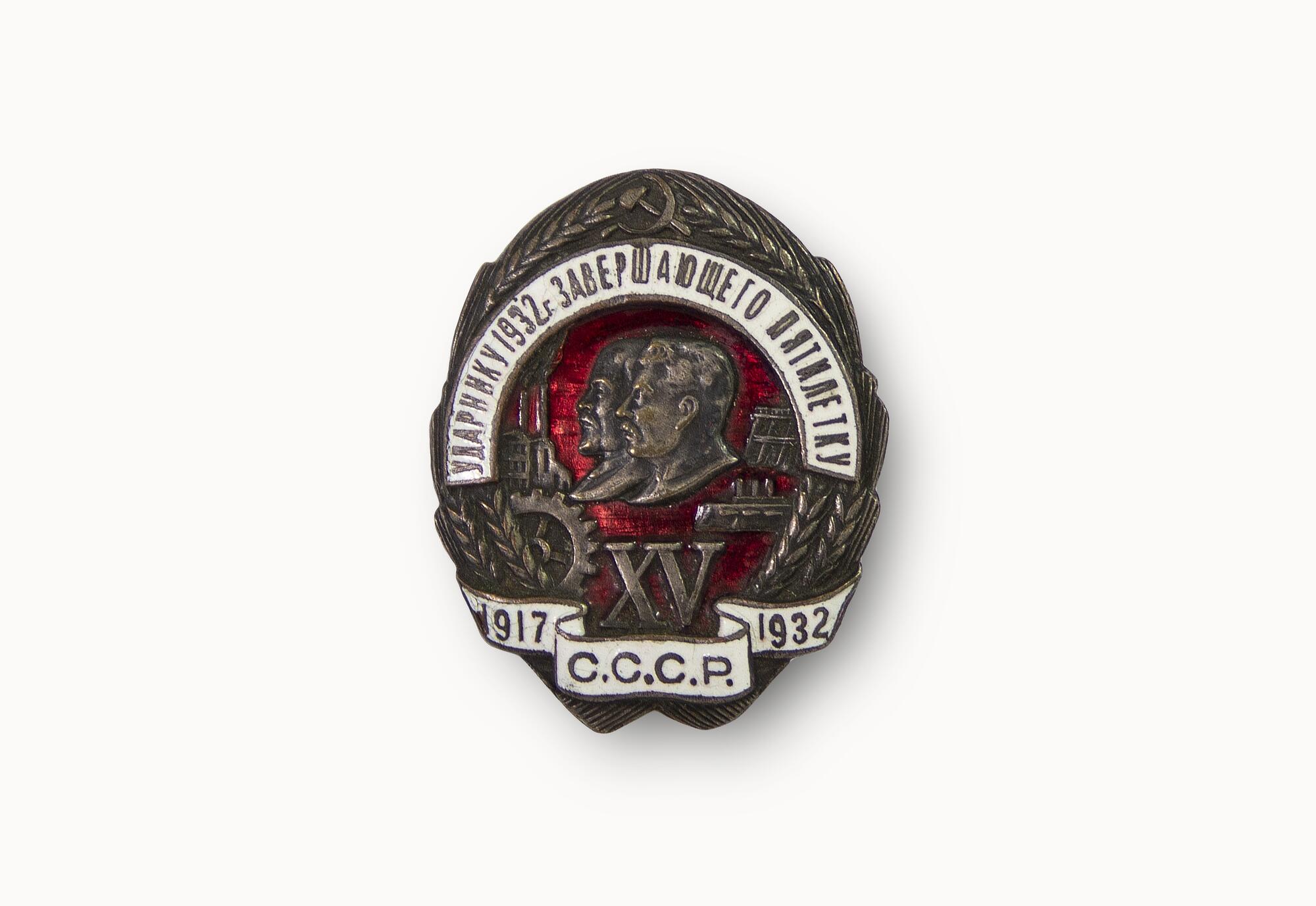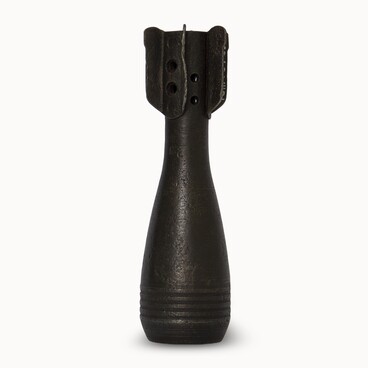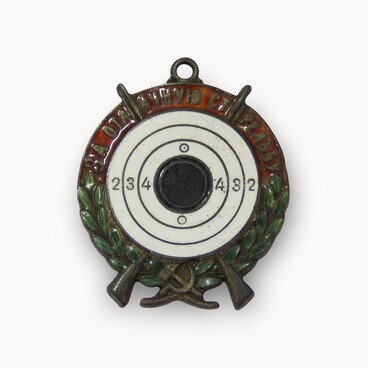In 1932, the Soviet Union widely celebrated the 15th anniversary of the Great October Socialist Revolution. It was also the final year of the first five-year plan. The best shock workers were awarded commemorative badges. 53,000 bronze and 10,000 silver badges were made.
On the obverse, the badge was framed with ears of corn which symbolized labor. They had the same meaning on the coat of arms of the USSR. At the top of the badge, there was a hammer and sickle, which symbolized the union of workers and peasants. Below, in a semicircle, there was the inscription, “Shock Worker of 1932, Final Year of the Five-Year Plan”.
In the center, there were side-face portraits of the leaders of the world proletariat — Vladimir Ilyich Lenin and Joseph Vissarionovich Stalin. They were flanked by the images of a factory, a gear, a hydroelectric power station, and a motor ship. Below in the center, there were Roman numerals “XV”. Even lower, there was a white ribbon with the inscription “1917 USSR 1932”.
The first five-year plan had a great influence on the later development of the Soviet Union. The main tasks were to replace obsolete equipment with new advanced technology and to transform the USSR from an agrarian country into an industrial one.
As a result, the share of industrial output in relation to agricultural production rose from 48% at the beginning of the five-year plan (1928) to 70% by the end of its fourth year. By that time, the five-year program of general industrial production had been fulfilled by 94%.
The industrial output more than tripled compared to the pre-war level. As for the heavy industry production program, it was completed by 108%. At the same time, agriculture also developed rapidly.
Collective farms united over 60% of peasant farms covering more than 70% of all peasant territories. The Soviet Union started harvesting 1,200–1,400 million poods of marketable grain every year. Over 200,000 collective farms and about 5,000 state farms were established which were brand new large enterprises.
On the obverse, the badge was framed with ears of corn which symbolized labor. They had the same meaning on the coat of arms of the USSR. At the top of the badge, there was a hammer and sickle, which symbolized the union of workers and peasants. Below, in a semicircle, there was the inscription, “Shock Worker of 1932, Final Year of the Five-Year Plan”.
In the center, there were side-face portraits of the leaders of the world proletariat — Vladimir Ilyich Lenin and Joseph Vissarionovich Stalin. They were flanked by the images of a factory, a gear, a hydroelectric power station, and a motor ship. Below in the center, there were Roman numerals “XV”. Even lower, there was a white ribbon with the inscription “1917 USSR 1932”.
The first five-year plan had a great influence on the later development of the Soviet Union. The main tasks were to replace obsolete equipment with new advanced technology and to transform the USSR from an agrarian country into an industrial one.
As a result, the share of industrial output in relation to agricultural production rose from 48% at the beginning of the five-year plan (1928) to 70% by the end of its fourth year. By that time, the five-year program of general industrial production had been fulfilled by 94%.
The industrial output more than tripled compared to the pre-war level. As for the heavy industry production program, it was completed by 108%. At the same time, agriculture also developed rapidly.
Collective farms united over 60% of peasant farms covering more than 70% of all peasant territories. The Soviet Union started harvesting 1,200–1,400 million poods of marketable grain every year. Over 200,000 collective farms and about 5,000 state farms were established which were brand new large enterprises.




